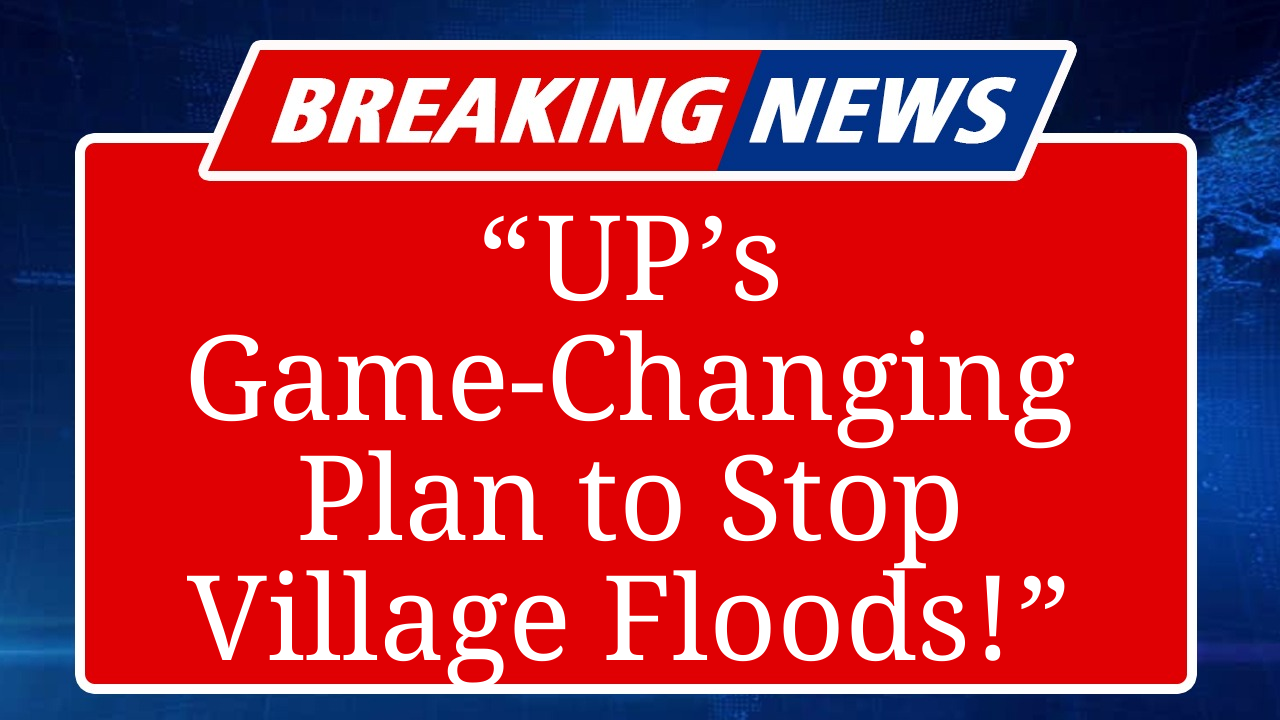“Uttar Pradesh has launched a comprehensive infrastructure plan to make villages flood-proof, focusing on advanced drainage systems, elevated roads, and community-driven preparedness. The initiative, backed by significant funding, aims to protect rural areas from recurring floods, ensuring safety and sustainability. Experts emphasize the need for proper implementation to address climate-driven challenges effectively.”
Uttar Pradesh’s Bold Strategy to Build Flood-Resilient Villages
In response to the increasing frequency of floods due to climate change, the Uttar Pradesh government has rolled out an ambitious infrastructure plan to transform its villages into flood-resilient hubs. Announced in August 2025, the initiative targets over 10,000 villages prone to seasonal flooding, particularly in the eastern and northern districts like Gorakhpur, Ballia, and Bahraich, which face annual inundation from rivers such as the Ganga, Ghaghara, and Rapti.
The plan hinges on a multi-pronged approach. First, the state is investing ₹5,000 crore to upgrade drainage systems, incorporating sustainable urban drainage systems (SUDS) inspired by global models like Rotterdam’s water storage systems. These systems will use permeable pavements and retention ponds to manage stormwater runoff, reducing flood risks. In Gorakhpur, a pilot project has already begun, with 50 villages equipped with modern drainage networks capable of handling 200 mm of rainfall in 24 hours, a significant improvement over the current 100 mm capacity.
Elevated infrastructure is another cornerstone. The state plans to construct 2,000 km of raised roads and bridges by 2027, ensuring connectivity during monsoons. In Bahraich, where floods marooned 300 villages in 2024, elevated roads are being built 1.5 meters above the highest recorded flood levels. This follows the model of flood-resistant roads in Assam, where raised highways have reduced disruptions. Additionally, 500 community buildings, including schools and health centers, will be elevated on helical piles, a technique proven effective in flood-prone regions like Bangladesh.
Community participation is being prioritized to ensure long-term resilience. The government has launched the “Flood-Safe Gram” campaign, training 50,000 volunteers across villages to maintain drainage systems and execute emergency response plans. In Ballia, villagers have collaborated with engineers to map flood-prone zones, integrating local knowledge into infrastructure designs. This mirrors successful community-driven flood management in Thailand’s Bangkok, where flood parks and permeable surfaces have curbed urban flooding.
The plan also emphasizes green infrastructure. The state aims to plant 10 million native trees, such as mangroves and lambago, along riverbanks to intercept runoff and stabilize soil. In 2024, a similar initiative in Cagayan de Oro, Philippines, reduced flood impact by 30%, serving as a model for UP’s approach. However, experts like Dr. Anil Kumar, a hydrologist at IIT Kanpur, caution that poor maintenance could undermine these efforts, citing examples from the Philippines where only 20-30% of planted mangroves survived due to inadequate monitoring.
Funding remains a critical challenge. While ₹5,000 crore has been allocated for 2025-26, experts estimate a need for ₹20,000 crore over five years to cover all vulnerable villages. The state is exploring public-private partnerships and central government grants, including the Housing-Enabling Water Systems Fund, to bridge the gap. In a recent statement, UP’s Irrigation Minister, Swatantra Dev Singh, emphasized accountability, promising regular audits to prevent fund misuse, a concern raised in the Philippines where flood control projects faced corruption allegations.
The plan’s success hinges on execution. Dr. Ragini Sharma, an urban planner, stresses the need for scientific data integration, similar to the Philippines’ Project NOAH, to prioritize high-risk areas. Without systemic reforms, she warns, UP’s villages could face the same cycle of floods and recovery seen elsewhere. As the state moves forward, the initiative could set a blueprint for rural flood resilience across India, provided it navigates the challenges of funding, maintenance, and community buy-in.
Disclaimer: This article is based on recent news reports, government announcements, and expert opinions available on the web as of September 2, 2025. Data and plans may evolve, and readers are advised to verify details with official sources.

